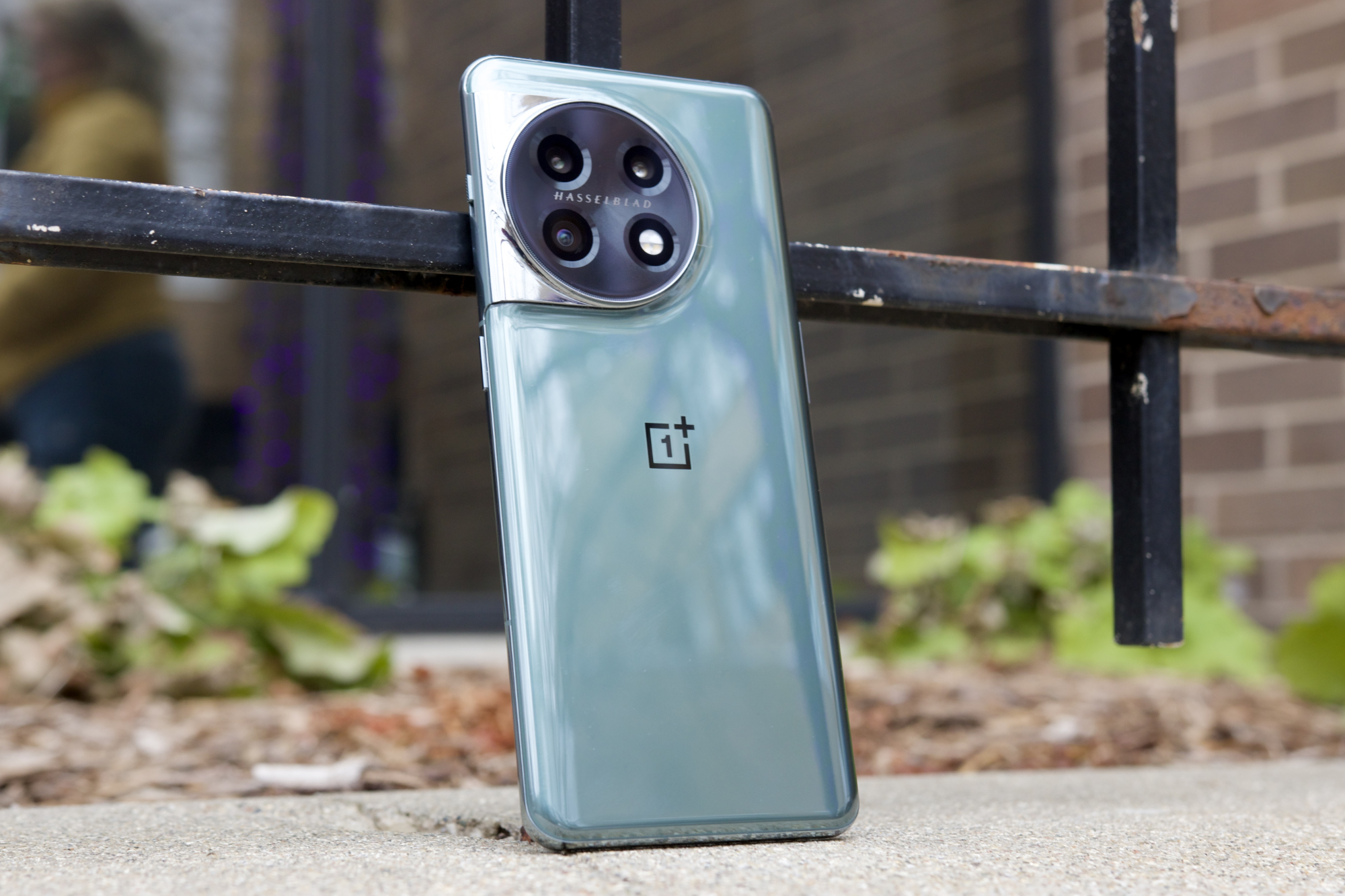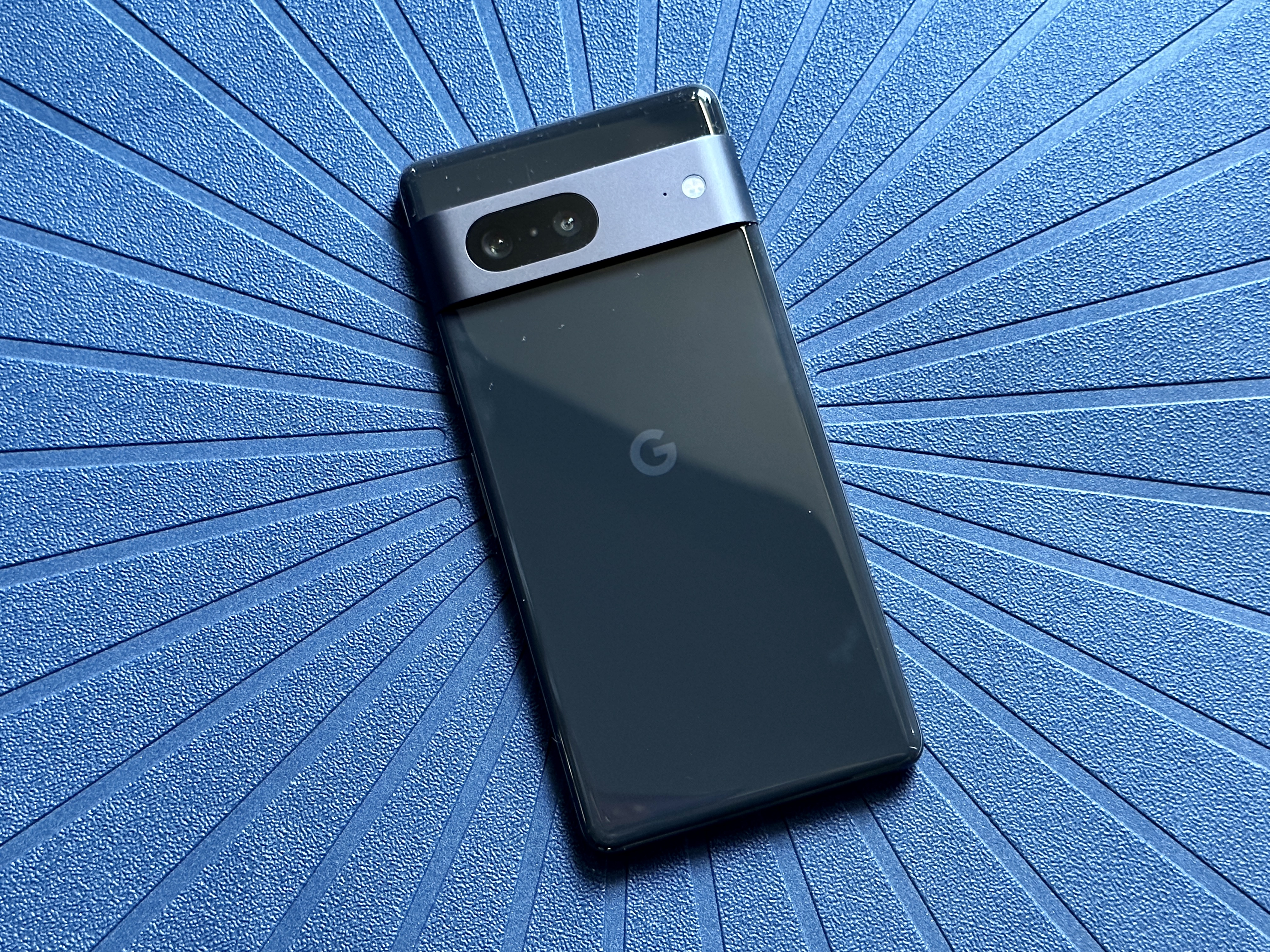Thinking of spending four figures on a top flagship smartphone? Hold your horses for just a moment, as you may not need to. OnePlus’ status as a flagship killer is well-earned, and the new OnePlus 11 showcases exactly what the company has learned in the eight years since it launched its first phone. Top-tier flagship power joins a high-spec camera, gorgeous display, huge battery, and a beautiful design — all for just $699.
- Specs
- OnePlus 11 vs. Pixel 7: design, display, and durability
- OnePlus 11 vs. Pixel 7: performance, battery life, and charging
- OnePlus 11 vs. Pixel 7: cameras
- OnePlus 11 vs. Pixel 7: software and updates
- OnePlus 11 vs. Pixel 7: special features
- OnePlus 11 vs. Pixel 7: price and availability
- Overall winner: OnePlus 11
But it’s not the only smartphone in this space, and one of the more tempting ones is the Google Pixel 7. Priced at just $599, Google’s smartphone exists in a similar space as the OnePlus 11, and includes flagship-level power, a gorgeous display and design, a showstopping camera, and a long-lasting battery. Throw both phones into the mix, and declaring a winner in the OnePlus 11 versus Google Pixel 7 battle suddenly becomes quite difficult.
Both are great reasons not to spend $1,000 on a flagship smartphone, but which one should you actually buy? We took a look at these two great devices, so you know which of the two is right for you.
Specs
| OnePlus 11 | Google Pixel 7 | |
| Size | 163.1 x 74.1 x 8.53mm (6.42 x 2.92 x 0.34 inches) | 155.6 x 73.2 x 8.7mm (6.13 x 2.88 x 0.34 inches) |
| Weight | 205 grams (7.2 ounces) | 197 grams (6.9 ounces) |
| Screen size | 6.7-inch Super Fluid AMOLED (1-120Hz refresh rate) | 6.3-inch AMOLED (10-90Hz refresh rate) |
| Screen resolution | 3216 x 1440 pixels (525 pixels per inch) | 2400 x 1080 pixels (416 pixels per inch) |
| Operating system | OxygenOS based on Android 13 | Android 13 |
| Storage | 128GB, 256GB | 128GB, 256GB |
| MicroSD card slot | No | No |
| Processor | Qualcomm Snapdragon 8 Gen 2 | Google Tensor G2 |
| RAM | 8GB, 16GB | 8GB |
| Camera | Triple lens 50-megapixel main lens, 48MP ultrawide lens, 32MP portrait lens rear
16MP front |
Dual lens 50MP wide-angle lens, 12MP ultrawide lens rear
10.8MP front |
| Video | 8K up to 24 frames per second (fps), 4K at up to 60 fps, 1080p at up to 240 fps, 720p at up to 480 fps | 4K at up to 60 fps, 1080p at 60 fps |
| Bluetooth version | Bluetooth 5.3 | Bluetooth 5.2 |
| Ports | USB-C | USB-C |
| Fingerprint sensor | Yes, in-display | Yes, in-display |
| Water resistance | IP64 | IP68 |
| Battery | 5,000mAh
80W wired charging (charger included in the box) |
4,355mAh
30W wired charging (no charger included in the box) 21W wireless charging Reverse wireless charging |
| App marketplace | Google Play Store | Google Play Store |
| Network support | Most major carriers | All major carriers |
| Colors | Titan Black, Eternal Green | Obsidian, Snow, Lemongrass |
| Price | Starting from $699 | Starting from $599 |
| Buy from | OnePlus | |
| Review | OnePlus 11 review | Google Pixel 7 review |
OnePlus 11 vs. Pixel 7: design, display, and durability
The fronts of phones have generally (thanks to narrow bezels) become rather similar. Instead, designers have gone to town on the rear casings, and both of these phones are good examples of that trend. The Pixel 7’s rear has a unique camera bar, complete with a brushed metal surface broken only by a hole for the camera lenses. The OnePlus 11 goes even further, with a massive circular camera module. They’re both distinctive, but also good-looking.
The OnePlus 11 has an advantage where display tech is concerned. Both have beautiful AMOLED displays, but the OnePlus 11’s variable frame rate can go from 1Hz all the way up to 120Hz, trumping the Pixel 7’s 10Hz to 90Hz refresh rate. That difference means the OnePlus 11 can exert less power at 1Hz on the always-on display, and feel even smoother when running the 120Hz rate.

Looking at durability, both of these phones use Gorilla Glass Victus, but even then, keep in mind that they’re both still made of glass, so don’t go throwing them around. The Pixel 7 wins out here though, thanks to an IP68 rating for dust and water resistance. The OnePlus 11 has an IP64 rating, which means it’s only protected against water spray and rain, and complete immersion will likely lead to water damage. The Pixel 7’s IP68 rating means it can withstand a short time underwater.
Both of these phones are winners, thanks to their gorgeous designs and displays. The Pixel 7’s IP68 rating gives it an edge, but the OnePlus 11’s refresh rate negates it. This is a tie.
Winner: Tie
OnePlus 11 vs. Pixel 7: performance, battery life, and charging

Both of these smartphones offer flagship power at a lower price, but they aren’t equal. The Pixel 7 uses Google’s Tensor G2 processor, and it’s a solid chip with great performance — most of the time. It struggles with gaming and raised a number of problems during our testing period. This stands in stark contrast to the OnePlus 11’s Snapdragon 8 Gen 2, which is a powerhouse. The processor brushed demanding games aside with ease and monstered its way through everything we could throw at it. It’s an incredible chip, and a big advantage for the OnePlus 11. Add 16GB of RAM (on the more expensive model), and the OnePlus 11 is a device that redefines what it means to be a flagship smartphone.

Does the OnePlus 11’s advantage continue on into the battery life? Unfortunately for Pixel fans, yes, it does. Don’t get us wrong — the Pixel 7’s battery life is solid, managing a full day even with demanding use. However, the OnePlus 11’s battery can last two days on moderate use, outperforming the Pixel 7’s battery life with comparable use.
Charging is also a big win for the OnePlus phone, with the supplied charger charging the phone at an astounding 80 watts. The Pixel 7’s 30W charging can’t compete, even when the Pixel phone has wireless charging and reverse wireless charging.
This one’s a slam dunk for the OnePlus 11.
Winner: OnePlus 11
OnePlus 11 vs. Pixel 7: cameras

The OnePlus 11 sports a triple-lens camera setup on the back, with lenses tuned by camera specialists Hasselblad. The result is a camera that takes well-balanced and realistic pictures without oversaturation — a worry on some other flagship phones. The ultrawide lens is consistent with the main lens, but some other elements do disappoint.
The automatic macro mode isn’t great, and the third lens is a dedicated portrait lens, which is an odd inclusion. It relies on digital bokeh to get the job done, and the edge detection can be a bit hit-and-miss. A telephoto lens may have been a better choice.

The Pixel 7 also lacks a telephoto lens, but the results from the main and ultrawide lenses are nothing short of incredible. The Pixel 7 consistently creates images that look amazing, and sometimes look even better than real life, thanks to the way it handles light and shadow.
The zooming is a little lackluster, due to the lack of telephoto zoom, and the front-facing camera could be better too, but there’s a reason the Pixel range is known as a camera king.
OnePlus has made some positive changes with the OnePlus 11, but the Google Pixel 7 still takes this round.
Winner: Google Pixel 7
OnePlus 11 vs. Pixel 7: software and updates

You’ll find Android 13 on both of these smartphones, but in rather different ways. The Pixel 7 runs the Pixel version of Android 13, which is essentially a stock Android 13 with a few additions. It’s sleek and smooth, and still one of the best software experiences around — even if our time with the Pixel 7 and Pixel 7 Pro hasn’t been bug-free.
OxygenOS used to be one of our favorite mobile operating systems, but recent changes have altered our outlook a bit. Oxygen OS 13 (based on Android 13) has started moving OnePlus’ software back in the right direction, though, and it’s a lot more visually appealing and useable. There are some issues, but they’re relatively minor and easy to ignore.
Update times are good for both. Google will push out updates for the Pixel phones on day one of a new Android version launch, and while OnePlus obviously can’t match that level of software support, it still manages to push out updates fairly quickly. However, OnePlus also promises to update the OnePlus 11 for one year more than the Pixel 7. The OnePlus 11 is promised four major Android updates, while the Pixel 7 is only guaranteed three. That’s a big factor to consider if you’re going to be holding onto your phone for a long time, and it helps to shift the balance back to the OnePlus 11.
Winner: OnePlus 11
OnePlus 11 vs. Pixel 7: special features

The OnePlus 11 isn’t exactly replete with special features, but it does have some tricks up its sleeve. The impressive gaming performance is helped by a cooling system that uses graphene to keep your components cool. The superfast 80W charging should definitely be considered here, too, as well as Dolby Vision and Atmos support.
The Pixel 7 comes with relatively few hardware special features, but it makes up for those with some very impressive software tricks. As you might expect, the Google Assistant is front-and-center in Google’s flagship phone, and it powers the call waiting and screening service, as well as a number of useful AI features.
It’s too hard to separate these two here. This is another tie.
Winner: Tie
OnePlus 11 vs. Pixel 7: price and availability
The OnePlus 11 starts from $699, preorders open on February 7, and it will arrive in stores and at doors on February 16. You’ll be able to preorder and buy it from OnePlus, Amazon, and Best Buy.
The Google Pixel 7 is currently available, with prices starting at $599, and you’ll likely be able to pick it up from most retailers that sell smartphones.
Overall winner: OnePlus 11

It’s a tough battle in many ways, and while the Google Pixel is clearly the stronger camera phone, the OnePlus 11 triumphs for a number of reasons. It’s tangibly more powerful, has a better display, and has a much longer-lasting battery.
While the Google Pixel 7 has a seriously impressive camera (and is still one of the best phones in 2023), it’s either closely rivaled or beaten in pretty much every other category by the OnePlus 11.
That’s not to say there isn’t a time when you’d pick the Pixel 7 over the OnePlus 11. If you prize camera quality, then the Pixel 7 is a great choice. It also starts at $100 less than the OnePlus 11, which helps to offset some of the more expensive phone’s processing power and other advantages. But if you’re not too worried about saving money, then you should probably buy the OnePlus 11.




